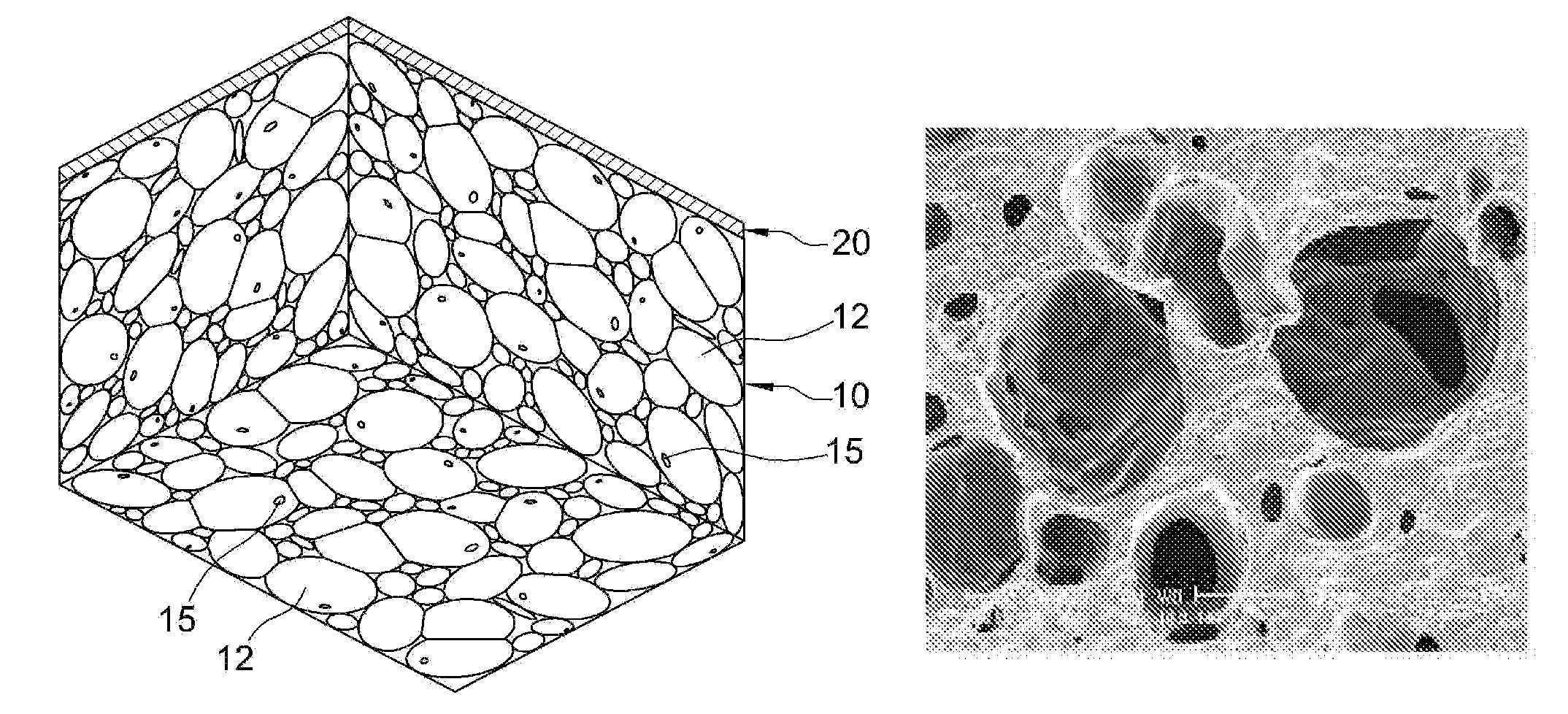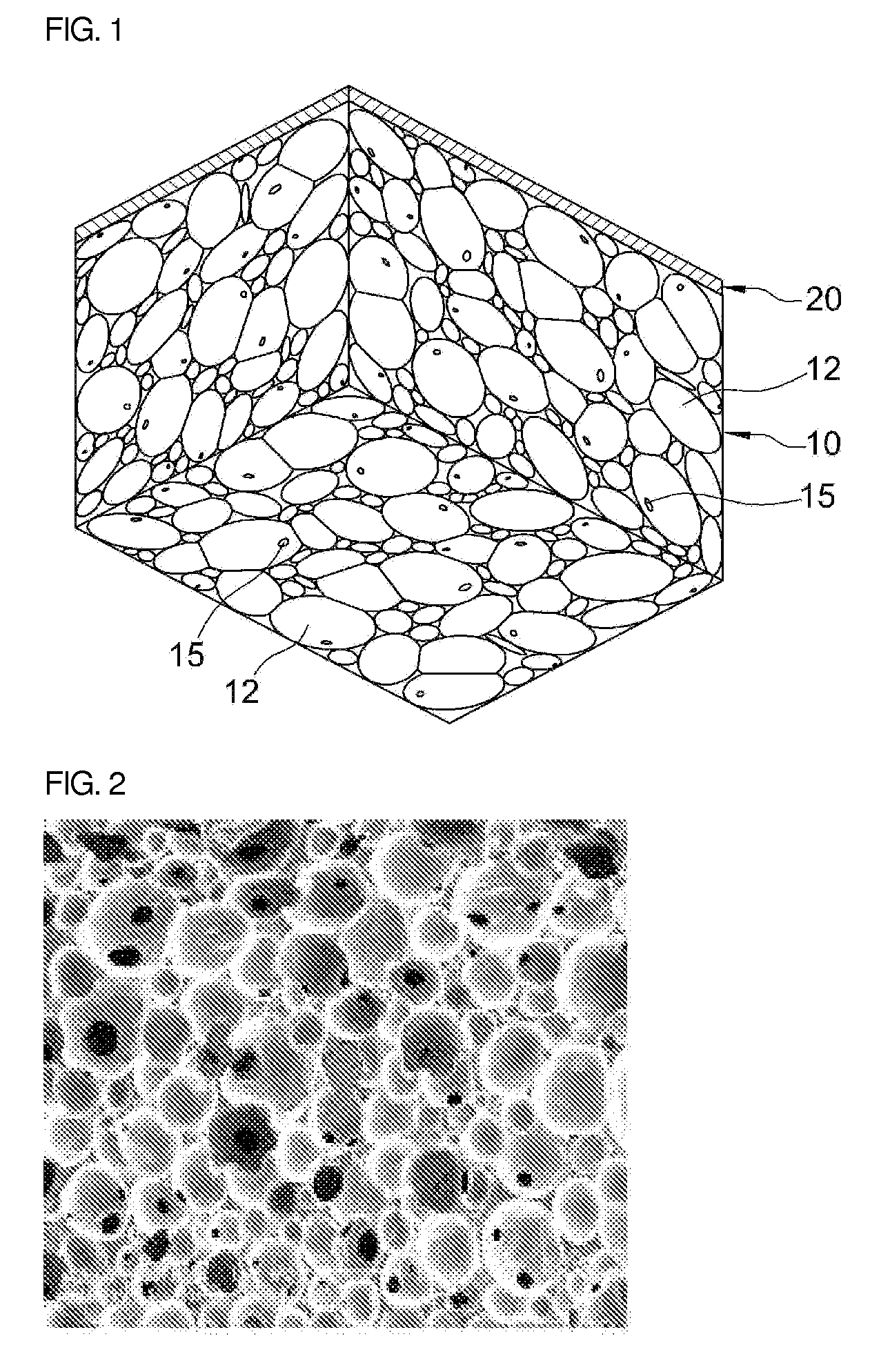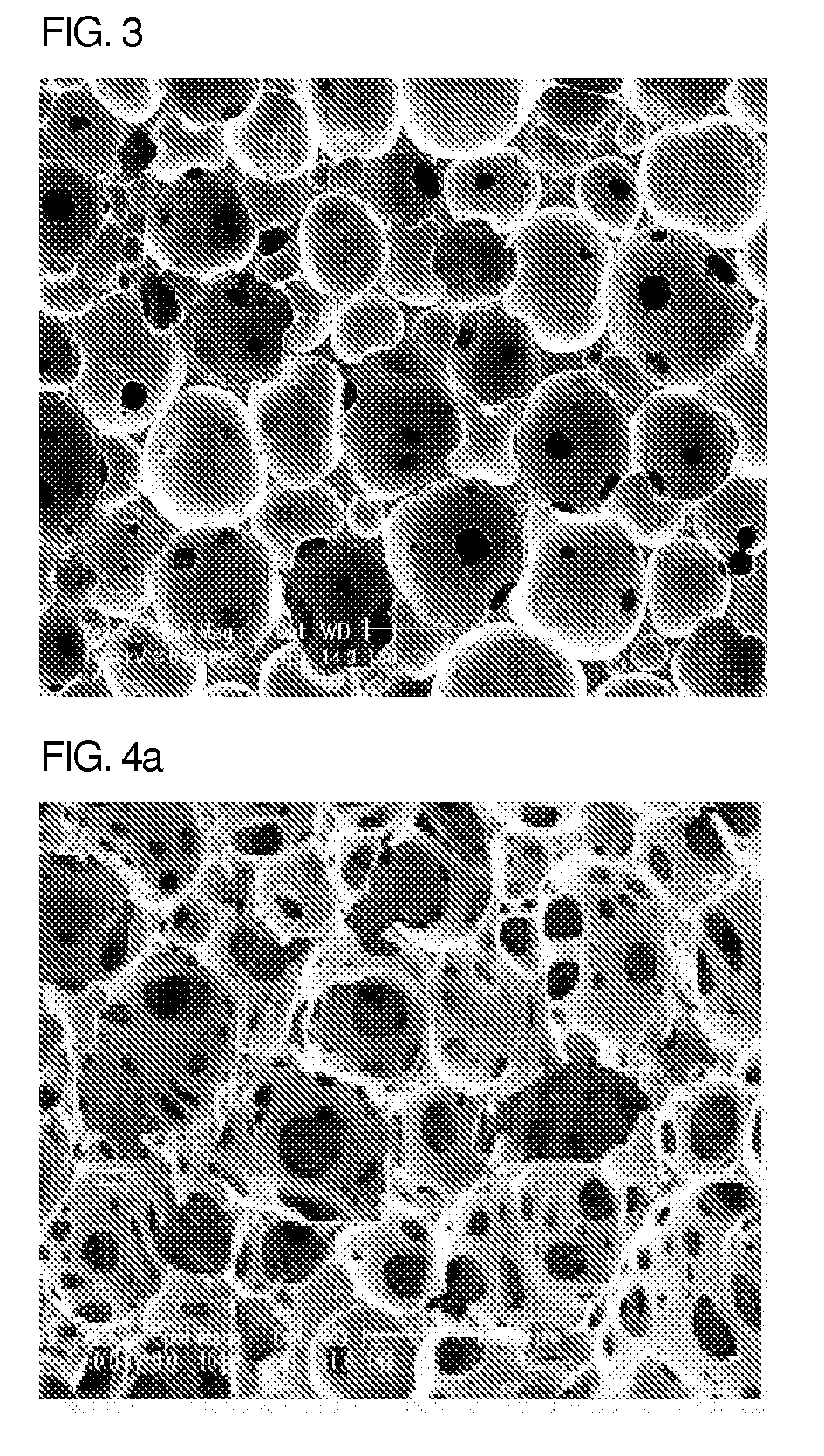Polyurethane foam dressing with improved moisturization
a technology of polyurethane foam and moisturizing rate, which is applied in the direction of dressings, plasters, bands, etc., can solve the problems of decreased moisturizing rate, failure of lamination of protective film layer on polyurethane foam absorption layer, so as to achieve a high moisturizing rate and reduce the effect of moisturizing ra
- Summary
- Abstract
- Description
- Claims
- Application Information
AI Technical Summary
Benefits of technology
Problems solved by technology
Method used
Image
Examples
synthetic example 1
Polyurethane Prepolymer of the Wound Contact Layer
[0055]To a 3 liter round bottom flask equipped with a stirrer were added 354 g of diphenylmethanediisocyanate and 314 g of isophoronediisocyanate. The temperature was raised to 60° C. and then ethyleneoxide / propyleneoxide random copolymer having at least 2 hydroxyl groups was added drop by drop, followed by reaction until the theoretical NCO % reached 12 to give a polyurethane prepolymer having an isocyanate terminal group. In the middle of the reaction, a sample was taken and the NCO % was measured by a titrimetric method using n-butylamine standard solution.
synthetic example 2
Polyurethane Prepolymer of the Wound Contact Layer
[0056]To a 3 liter round bottom flask equipped with a stirrer were added 296 g of diphenylmethanediisocyanate and 275 g of isophoronediisocyanate. The temperature was raised to 60° C. and then ethyleneoxide / propyleneoxide random copolymer having at least 2 hydroxyl groups was added drop by drop, followed by reaction until the theoretical NCO % reached 5 to give a polyurethane prepolymer having an isocyanate terminal group. In the middle of the reaction, a sample was taken and the NCO % was measured by a titrimetric method using n-butylamine standard solution.
example 1
[0057]To 66.85 weight % of the polyurethane prepolymer prepared in the above Synthetic Example 2 were added 20.5 weight % of distilled water as a foaming agent, 10 weight % of glycerin as a cross-linking agent, 0.5 weight % of F-87 (Basf) as an additive, 0.05 weight % of L-64, 2 weight % of sodiumalginate, 0.05 weight % of silver sulfadiazine, and 0.05 weight % of a soluble pigment, followed by stirring at 4,000 rpm for 5 seconds. The mixture was poured in the mold of a certain shape and foamed. The temperature of the mold was set at 25° C. and separation was performed 10 minutes after the pouring. The skin layer was eliminated by using a horizontal splitting machine and the rest was cut into 5 mm thick sheets. One side of the polyurethane foam was heat-pressed with a polyurethane film to give a foam dressing material. The density of the hydrophilic polyurethane foam dressing material of the present invention was 0.25 g / cm3.
[0058]FIG. 1 is a photograph from a scanning electron micro...
PUM
| Property | Measurement | Unit |
|---|---|---|
| pressure | aaaaa | aaaaa |
| mean diameter | aaaaa | aaaaa |
| mean diameter | aaaaa | aaaaa |
Abstract
Description
Claims
Application Information
 Login to View More
Login to View More - R&D
- Intellectual Property
- Life Sciences
- Materials
- Tech Scout
- Unparalleled Data Quality
- Higher Quality Content
- 60% Fewer Hallucinations
Browse by: Latest US Patents, China's latest patents, Technical Efficacy Thesaurus, Application Domain, Technology Topic, Popular Technical Reports.
© 2025 PatSnap. All rights reserved.Legal|Privacy policy|Modern Slavery Act Transparency Statement|Sitemap|About US| Contact US: help@patsnap.com



